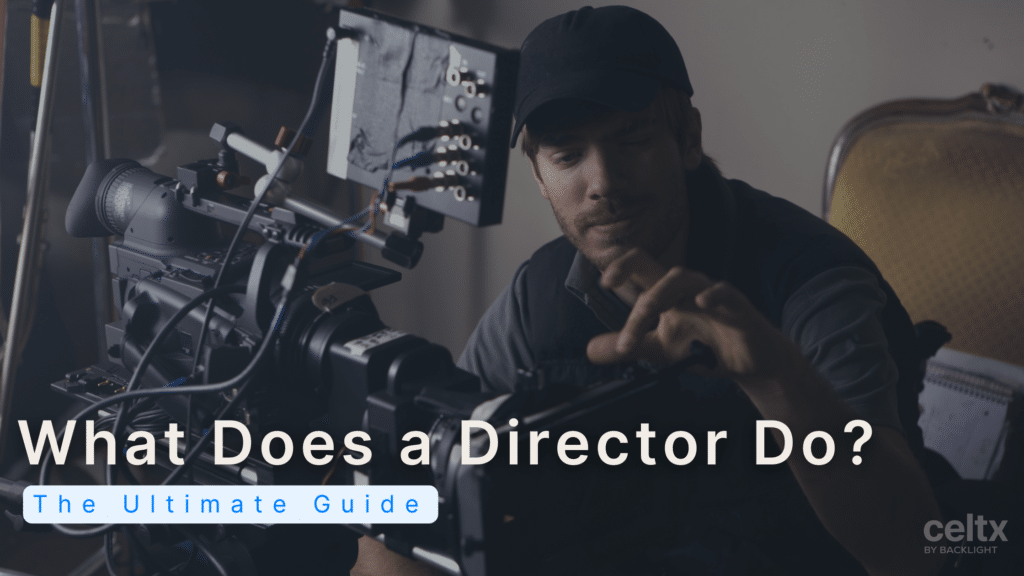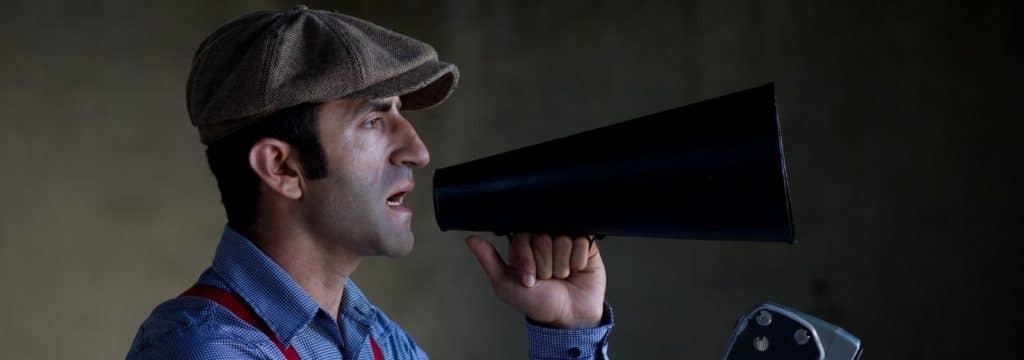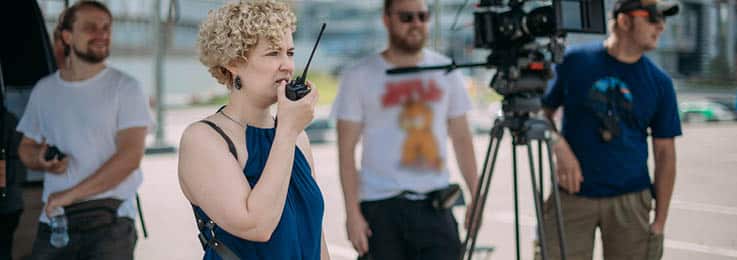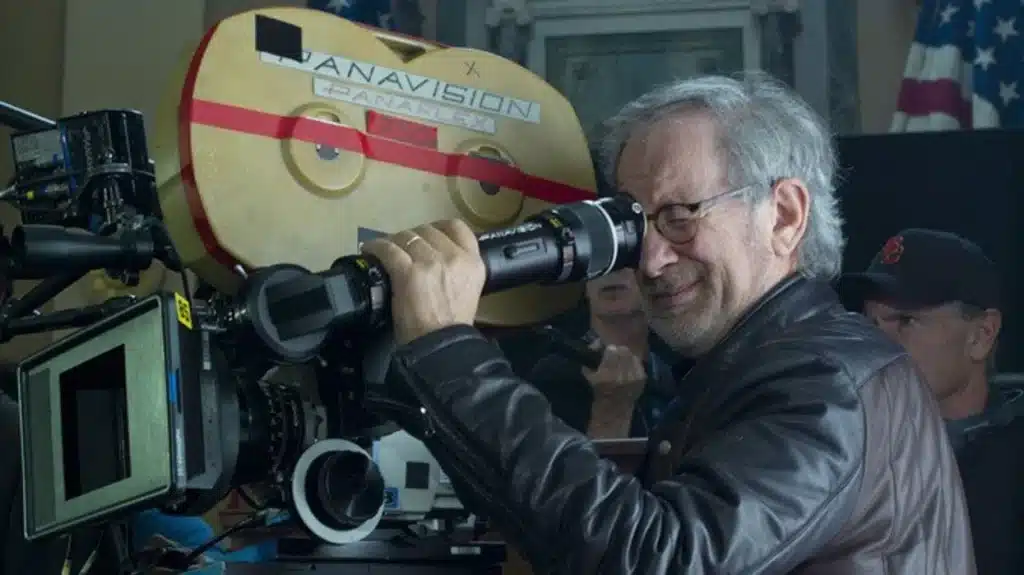
Imagine having the power to move millions with a single scene, a lingering glance, or a whispered line. It’s a kind of magic—one that belongs to film directors.
Directors are more than storytellers; they’re visionaries who craft vivid emotional landscapes on screen. Every frame, line of dialogue, and moment of silence is meticulously designed to evoke emotions, provoke thought, and ignite conversation.
With digital advancements transforming filmmaking, directors face new challenges and opportunities. From innovative storytelling methods to changing audience habits, they must constantly evolve to keep up with the ever-shifting landscape of cinema.
Let’s explore the world of film directors—what they do, how they shape stories, and how their role is evolving in the digital age. By the end, you might find yourself watching movies with a whole new perspective.
In This Article:
1. The Director’s Role – A Brief Overview
2. Stage One: Pre-Production – Developing the Vision
3. Stage Two: Casting – Choosing the Perfect Actors
4. Stage Three: Production – Bringing The Vision to Life
5. Stage Four: Post-production – Editing the Footage
6. The Future of Directing: Streaming and Beyond
7. Essential Skills for a Director
8. Steps to Becoming a Film Director
9. Frequently Asked Questions (FAQ)
10. Conclusion

The Director’s Role – A Brief Overview
Film directing has evolved significantly over the decades. Once primarily supervisors, today’s directors wear many hats—visionary, storyteller, collaborator, and more. They don’t just oversee a film; they shape its soul, infusing it with their unique creative touch.
Their responsibilities include:
- Interpreting the script and developing a vision for the film
- Collaborating with writers, producers, and cinematographers
- Directing actors to achieve the desired performances
- Overseeing camera work, lighting, and sound design
- Managing the overall tone, pacing, and visual storytelling
But what exactly does a film director do at each stage of production?
Stage One: Pre-Production – Developing the Vision
Before a single frame is shot, a film goes through the crucial stage of pre-production. This is where a director’s vision begins to take shape.
Script Analysis
The first step in pre-production is script analysis. Directors begin to visualize how the story will unfold on screen, imagining every shot and moment that will bring the story to life, from understanding the characters, themes, to the narrative arcs.
How will the story will unfold on screen? How will they accomplish each shot? And how they will all come together to tell a meaningful story, all happens in pre-production.

Collaborating with Screenwriters and Producers
Directors work closely with screenwriters, producers, and other members of the creative team, refining the script and ensuring every scene aligns with the overall vision.
This collaboration ensures that everyone involved in the project understands the direction the film is taking and can help bring the vision to life.
Scouting Locations
Every location contributes to the film’s mood and visual style. Directors, along with production designers and location managers, visit potential sites to find the perfect backdrops for key scenes.
By the end of pre-production, the director has a clear roadmap, ensuring a smooth transition into filming.
Related Reading: Movie Lighting: A Basic Guide
A well-organized pre-production phase makes for a smoother shoot. Celtx helps you map out every detail, from script breakdowns to shot lists. Get started for free!
Stage Two: Casting – Choosing the Perfect Actors
Casting is more than selecting well-known names; it’s about finding actors who truly embody the characters.
The Art and Science of Selecting Actors
Directors look beyond resumes and headshots, searching for that intangible quality—an actor’s ability to bring depth and authenticity to a role.
The Audition Process
Auditions are the stage where the magic happens. Film Directors watch for that special spark—a subtle expression, a unique energy—that makes an actor the right fit for a character. When the spark is found, it feels like striking gold!
Working with Casting Directors
Casting directors play a crucial role in casting, serving as the vital link between the film director, actors, and their agents. They meticulously sift through numerous profiles containing professional headshots and bios of each actor, organize auditions, and assist in finding the perfect match for each role.
Their exceptional talent-spotting abilities and profound comprehension of the project’s requirements make them indispensable members of the production team.
Stage Three: Production – Bringing The Vision to Life
With pre-production complete and the cast in place, filming begins. This is where a director’s vision comes to life on set.
Directing Actors
A director’s relationship with actors is crucial.
Directors serve as a beacon, guiding actors to get into the heart of their roles. Together, they spend countless hours in workshops, rehearsals, and heart-to-heart chats, making sure the actor’s portrayal matches the director’s vision. It’s more than just saying lines on cue; it’s about feeling every emotion, every backstory.
Through sincere feedback, transparent conversations, and a bedrock of trust, directors and actors collaborate to create memorable characters.

Working with the Crew
Making feature films is a massive team effort, and the film director works closely with many talented crew members. Every production team member, from the Director of Photography (or Cinematographer) who captures the visuals, to the sound and music departments responsible for creating the music, Foley, and sound, plays a vital role in the process. Close collaboration is necessary to transform the final product into a truly remarkable movie.
Related Reading: Cinematographer vs Director | (Defined and Compared)
Balancing Structure and Spontaneity
While directors follow a carefully planned schedule, they must also be open to unexpected moments of creativity on set, allowing for improvisation and fresh ideas.
Stage Four: Post-production – Editing the Footage
Once filming wraps, we now venture into the final stage of filmmaking: post-production. This is where all the creative aspects and technical aspects come together to form the completed film.
Working with Editors
Working with editors is a crucial part of post-production. This phase of the filmmaking process is like a treasure hunt, sifting through hours of footage to find those perfect moments!
The film director guides the editor, using their deep understanding of the story, characters, and the emotional journey they want the audience to experience. The editor, with their technical expertise and an objective eye, helps shape these raw materials into a coherent, captivating film.
Together, the film director and editor shape the movie’s narrative, rhythm, and pace into a final edit.
Sound and Music
Sound design and music are essential in setting the film’s mood. Directors work with composers and sound designers to enhance storytelling through audio elements. Overall, the sound department tries to match the film’s tone and on-screen action.
Special Effects
In modern filmmaking, special effects often play a significant role. From breathtaking visual effects to intricate animations, these VFX elements can add a layer of magic and wonder to the film.
The film director guides the effects team to ensure these elements align with the film’s vision and enhance rather than distract from the story.
Keep your vision intact by planning every scene with Celtx’s collaborative scriptwriting and production tools.
The Future of Directing: Streaming and Beyond
The rise of streaming platforms has reshaped how films are made and consumed. Streaming platforms are becoming more popular, giving directors more opportunities to showcase their work. Directors must now consider new storytelling formats and audience habits.
Streaming’s Impact on Directing
Streaming platforms like Netflix and Amazon Prime have revolutionized how we consume content. This shift has also impacted the film director’s job description.
Unlike traditional theatrical releases, streaming platforms allow directors to tell more complex, long-form stories. Additionally, these platforms often provide more creative control and freedom, allowing directors to push boundaries and experiment with unconventional storytelling techniques.
However, this shift also poses new challenges. Directors must now consider binge-watching habits and create content that keeps viewers hooked over several episodes or seasons. They also need to adapt to the lack of traditional markers of success, such as box office numbers.

Directing for Series vs. Films
Directing a film and directing a series share many similarities. In both, directors guide the actors’ performances, collaborate with production teams, and shape the project’s overall vision.
However, there are key differences. The narrative arc typically extends over multiple episodes or seasons when directing a series. This long-form storytelling allows for deeper character development and complex plotlines.
In contrast, films usually have a self-contained narrative that unfolds within a few hours. The director’s challenge here is to deliver a compelling story within this limited timeframe.
To sum it up, the emergence of streaming platforms is transforming the responsibilities of directors and presenting them with thrilling opportunities for storytelling. However, whether it entails directing a movie or a series, the primary objective remains to produce unforgettable content that connects with viewers.
Related Reading: Streaming Platforms and Their Impact on the Film Industry || FilmTrack
Essential Skills for a Director
A successful director must master multiple skills, from technical expertise to leadership abilities. Below are some key competencies:
1. Visual Storytelling
Understanding how to convey emotion and narrative through framing, composition, and movement is crucial. Directors must work closely with cinematographers to craft compelling visuals that support the story.
2. Communication and Leadership
A director must clearly articulate their vision to the cast and crew, making decisive choices while fostering a collaborative environment on set.
3. Script Analysis
A deep understanding of character arcs, pacing, and structure allows directors to bring out the best in a script. This includes making script adjustments and working with writers to refine dialogue and scenes.
4. Problem-Solving Under Pressure
On-set challenges, from weather disruptions to technical failures, require quick thinking. A director must adapt and find creative solutions while keeping production on track.
5. Knowledge of Editing and Post-Production
Understanding the editing process helps directors plan shots effectively and communicate with editors to ensure the final product aligns with their vision.

Steps to Becoming a Film Director
1. Study Film and Storytelling
While formal education isn’t required, many aspiring directors benefit from film school or self-study. Watching films critically, reading screenplays, and analyzing directorial choices can help build foundational knowledge.
2. Gain Hands-On Experience
Start by working on student films, short films, or independent projects. Experience in different crew positions (such as assistant directing, cinematography, or editing) can provide valuable insights into the filmmaking process.
3. Build a Portfolio
Creating a reel of short films or directing samples showcases your style and abilities. A strong portfolio can help attract producers, investors, or collaborators.
4. Network in the Industry
Connecting with filmmakers, attending film festivals, and joining industry organizations can lead to opportunities. Many directors start by working under experienced filmmakers before helming their own projects.
5. Develop Your Unique Directorial Style
Great directors have a signature approach to storytelling, whether through themes, visual aesthetics, or working methods. Experiment with different styles and techniques to refine your voice.
Ready to take the first step? Start developing your script with Celtx today.
Frequently Asked Questions (FAQ)
Do I need to go to film school to become a director?
No, while film school provides structured learning and networking opportunities, many directors are self-taught or gain experience through hands-on work in the industry.
How can I start directing with no budget?
Start with short films using minimal locations, natural lighting, and volunteer actors. Many successful directors began with DIY projects that showcased their talent and storytelling ability.
What is the best way to get noticed as a new director?
Submitting short films to festivals, building a strong online presence, and networking with industry professionals can help gain recognition.
How long does it take to become a film director?
The path varies—some directors break through in a few years, while others take a decade or more. Persistence, continuous learning, and building experience are key.
Conclusion
Becoming a film director requires dedication, creativity, and perseverance. Whether through film school or hands-on experience, aspiring directors must refine their skills, build a strong portfolio, and network within the industry.
Every great director started somewhere—keep learning, keep creating, and take every opportunity to bring your vision to life.
Every project is a step closer to realizing your vision. Begin your journey with Celtx’s free scriptwriting tools.

Keep exploring jobs in film:
- Producer vs. Director: Roles, Responsibilities & 5 Key Differences
- Beyond the Set: Exploring Different Jobs in the Film Industry
- How to Become a Script Reader: 7-Step Guide
